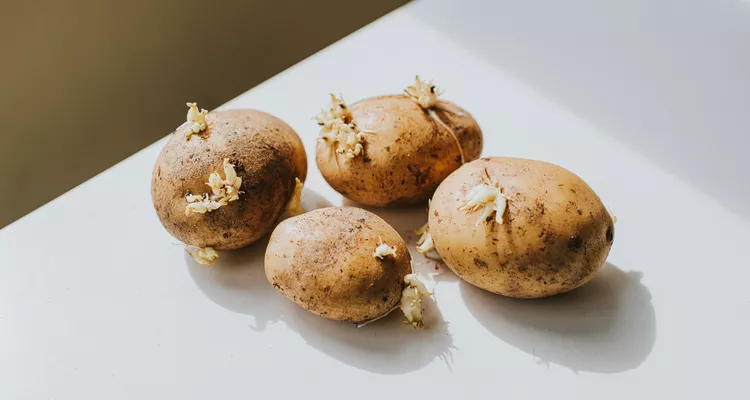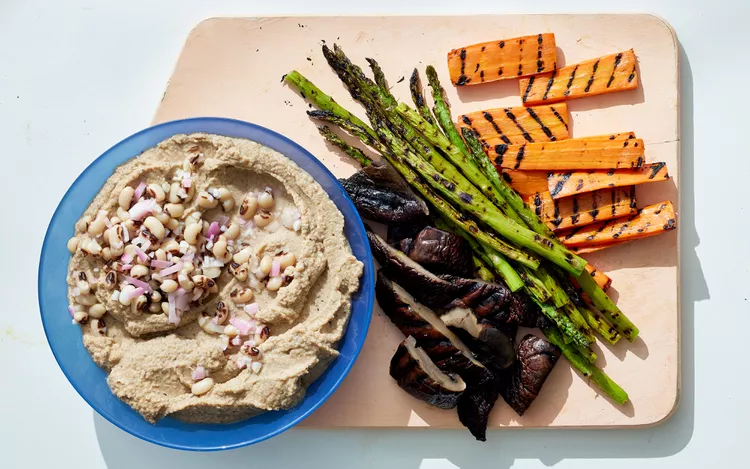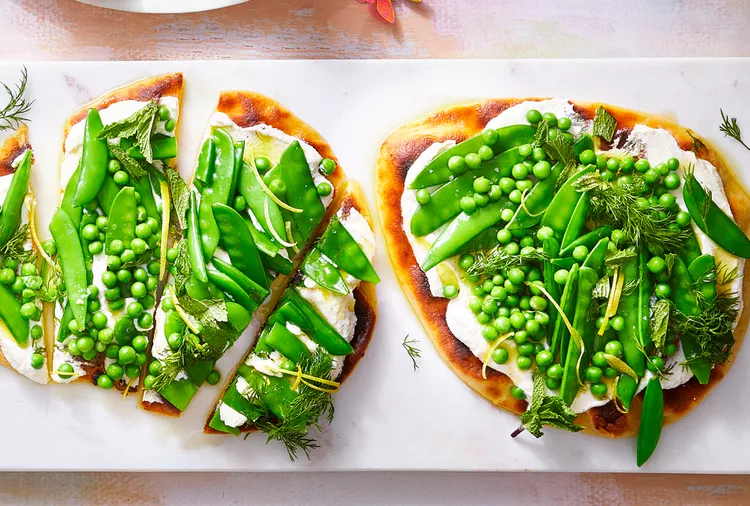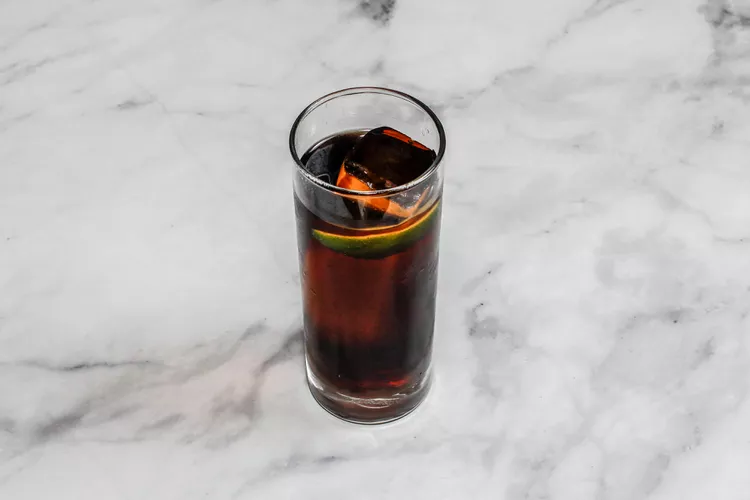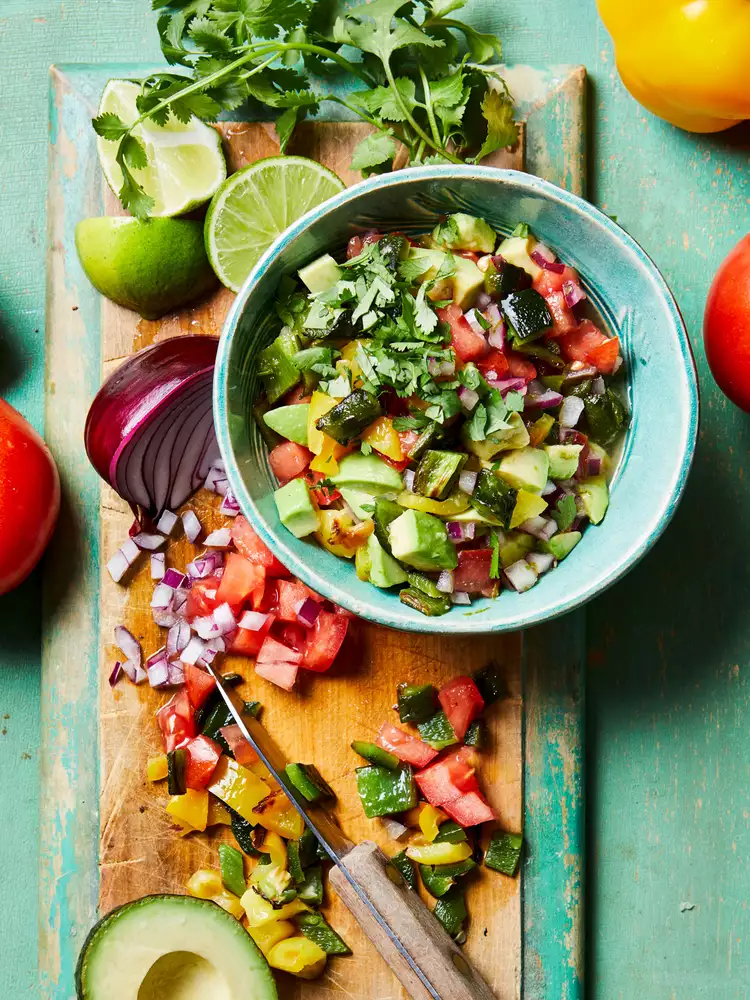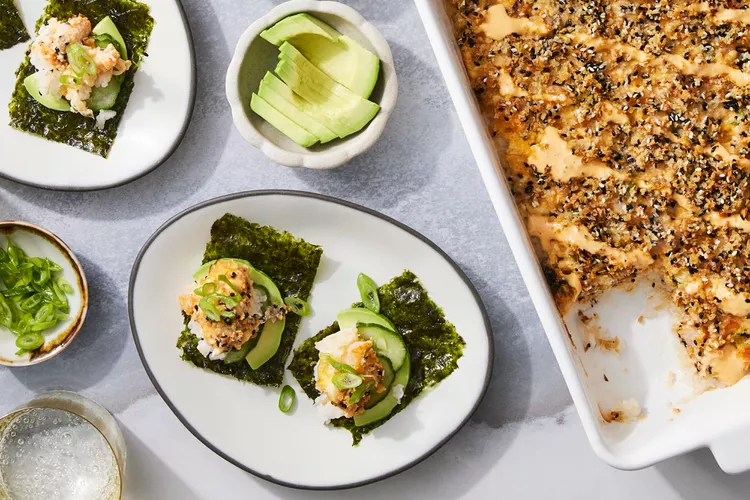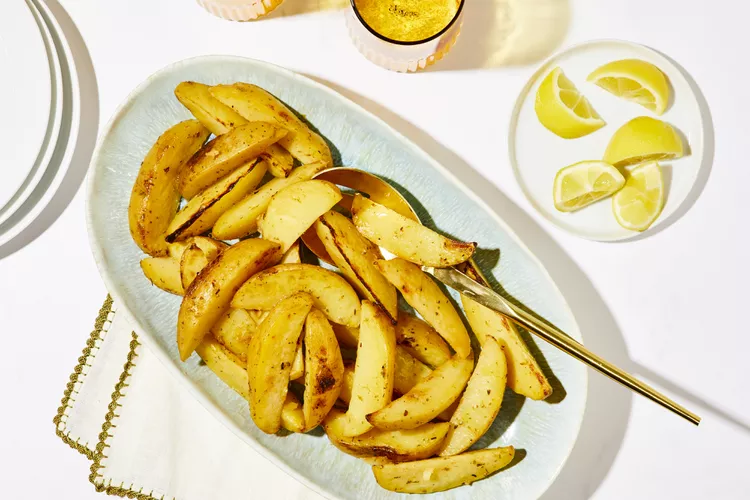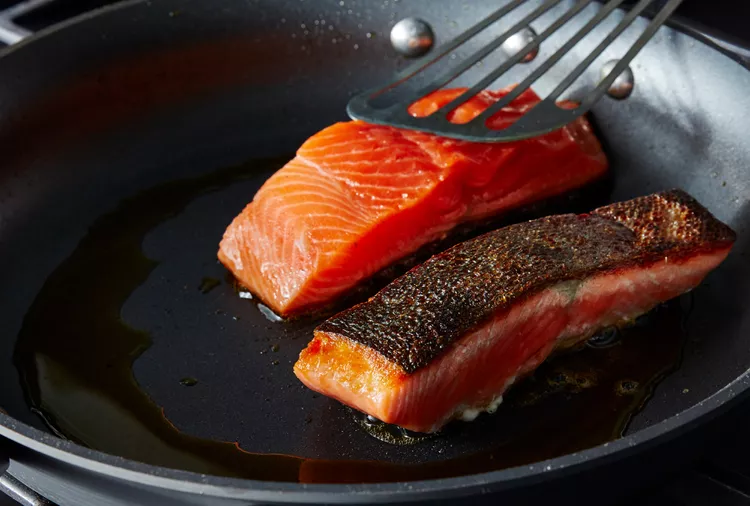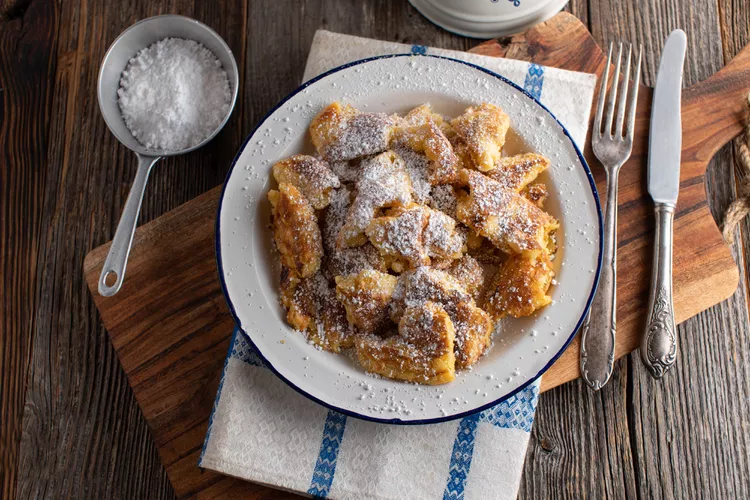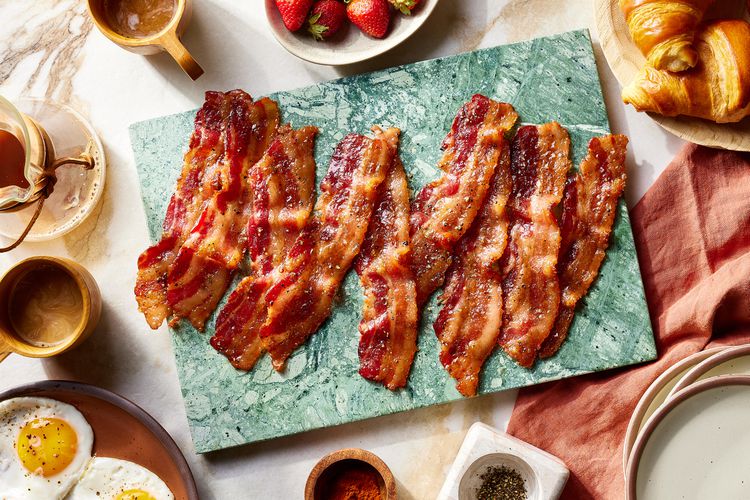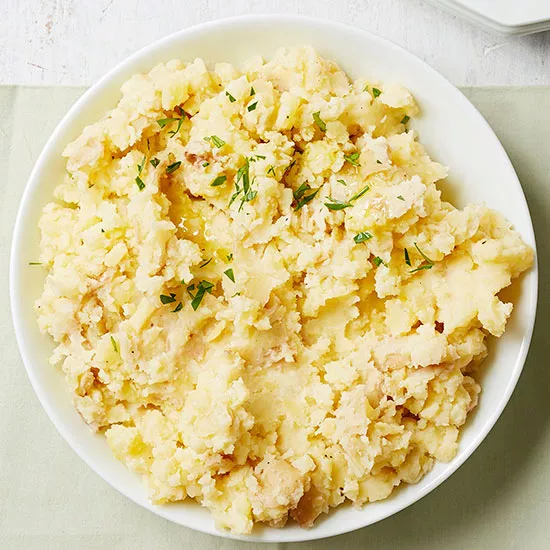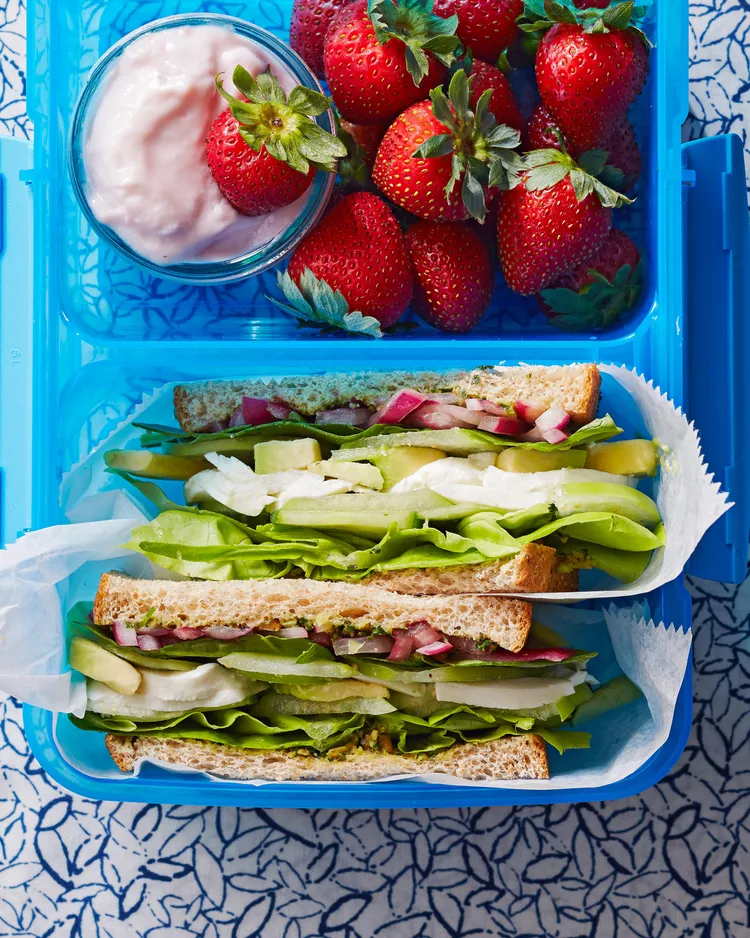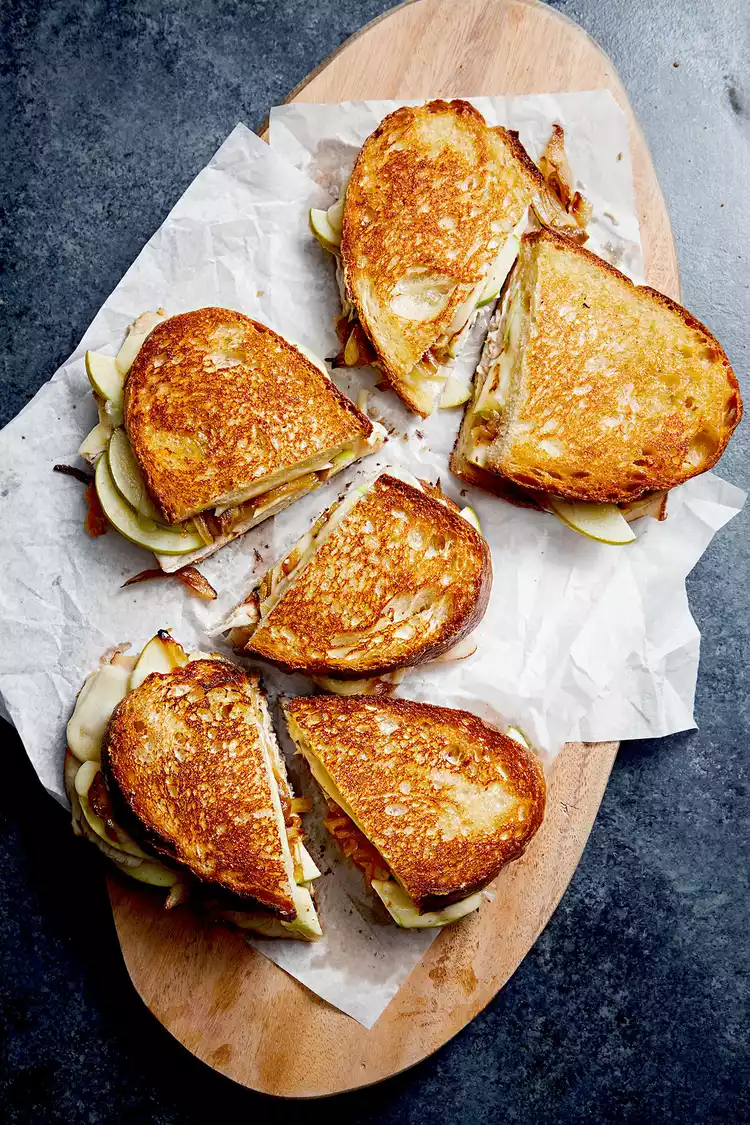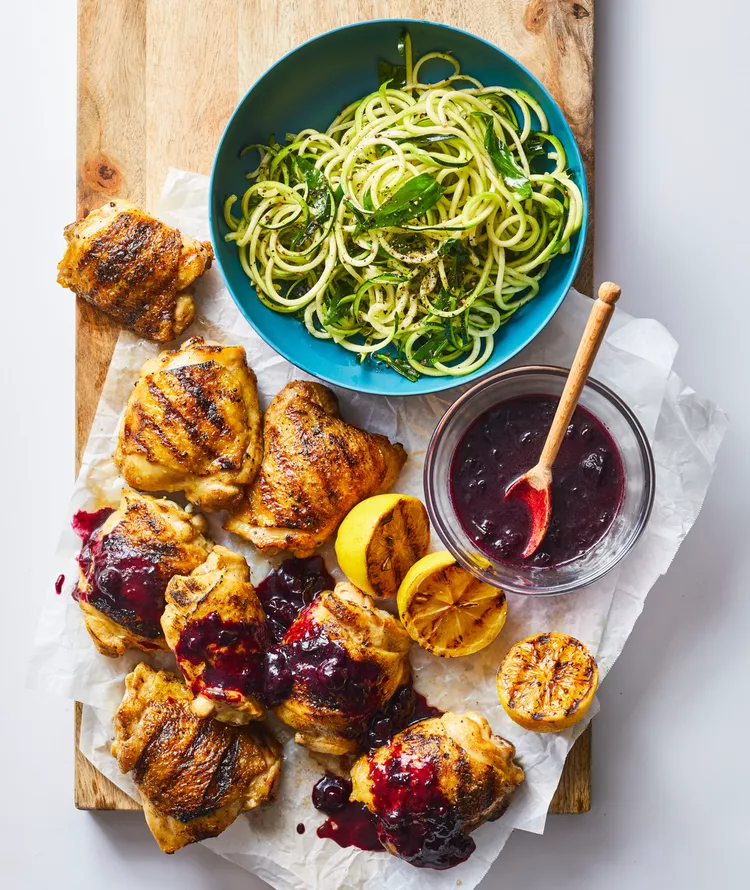You’re about to start making your favorite potato recipe when you notice them: knobby, misshapen white growths poking out of the potato’s skin.
Commonly called “eyes,” these growths occur when potatoes are left in storage for too long and start to sprout. They’re unsightly, sure, but are they safe to eat?
Here, we tapped three experts to tell us everything you need to know about sprouted potatoes, including best practices for food safety, proper storage tips, and more. Follow their guidance and you won’t have to worry about any sprouting next time you set out to make mashed potatoes.
- Sarah Brekke, M.S., culinary specialist, Better Homes & Gardens Test Kitchen
- Stephanie Crabtree, M.S., R.D.
- Crystal Higgins, R.D.
Why Do Potatoes Sprout?
Potatoes will sprout and turn green in color if they are stored in spring-like conditions—think warm, bright, or moist spaces. These conditions encourage the potato to regenerate and grow a new potato plant.
“Potatoes are tubers and they propagate by creating sprouts that will grow into a new plant under the correct conditions,” Brekke says. “When potatoes are exposed to warmer temperatures around 70°F, the potato senses that spring has come and it’s time to sprout and grow a new crop.”
Sprouted potatoes can be planted, Higgins notes, and will eventually develop into new potato plants under the right conditions. To grow new potatoes from sprouted potatoes, all you need to do is plant a piece of the sprouted potato in the ground or in a pot covered with 3 inches of soil. Green shoots, which will grow into bushy plants, should start to emerge within 2 weeks.
Is It Safe to Eat a Potato with Sprouts?
If your potato has sprouted, do not eat the sprouts themselves. The sprouts—as well as the wrinkly green flesh surrounding them—contain high amounts of compounds that can be toxic to humans.
“The sprouted or green parts of a potato contain two glycoalkaloids called solanine and chaconine, which are toxic and can cause stomach upset,” Crabtree says. “Cooking does not eliminate these substances, so they need to be removed completely.”
While potatoes themselves naturally contain small amounts of solanine and chaconine, the sprouts contain higher amounts, so they should be avoided.
“In low levels these substances appear relatively safe, but as the potato sprouts, the amount of alkaloids increases, particularly around the ‘eyes’ and sprouts,” Higgins says. “The sprouts contain solanine, a toxic compound that can cause nausea, vomiting, and abdominal pain. Do not eat potato sprouts, as these will have the highest amount of solanine. Very high levels of solanine are associated with headaches, flushing, confusion, and fever.”
In many cases, you can still eat the rest of the potato as long as you remove the sprouts and cook the potato thoroughly. “If the sprouts are small and entirely removed and the remaining potato is firm with no wrinkles, it is likely still safe to eat,” Brekke says. “If the potato flesh has a green hue and the skin is wrinkled, too much solanine has likely accumulated and the potato needs to be discarded.”
With that said, if the potato is soft, wrinkly, extensively sprouted, or has a greenish tint, all of our experts recommended tossing it. “When it comes to food safety, I always go by the quote, ‘When in doubt, throw it out,’” Higgins says.
How to Remove Potato Sprouts
It's important to remove any sprouts from the potato before eating. If the sprouts are small, Brekke says, they can simply be snapped off of the potato using your fingers. Use a sharp paring knife or the curved tip of a vegetable peeler to remove any larger sprouts from the potato.
In addition to removing the sprouts, make sure to peel off any green skin on the potato. And if you notice a lot of green, it’s best to just toss the potato out. “Make sure there is not a green hue to the potato,” Crabtree says. “If a green hue remains, I would throw it out and reduce the risk of getting sick.”
How to Prevent Potatoes from Sprouting
While potatoes are hardy and have a long shelf life, proper storage is essential to keep them from sprouting so that you can safely use them in everything from casserole to soup. Store potatoes in a paper bag, burlap sack, or box with holes in a dark, dry, and cool location—Higgins says between 45 and 50°F is ideal. Use proper ventilation to reduce moisture and promote air circulation and avoid direct light, which will encourage sprouting.
“Store potatoes in a cool, dry, and dark location such as in a cool pantry, garage, basement, or cellar,” Brekke says. “Potatoes can be placed in a paper bag to limit light exposure if needed. That said, do not store them in the refrigerator—the cold temperatures will accelerate the conversion of starch to sugars, affecting the flavor and texture of the potato.”
Crabtree and Higgins also recommend keeping potatoes away from onions or apples, which release ethylene gas that can trigger sprouting. “Onions and apples release a gas that speeds up ripening and they need to be kept separate from most other fruits and vegetables,” Crabtree says.
In addition to preventing sprouting, following proper storage guidelines can also have some health benefits.
“Research has shown that potatoes stored at cool temperatures maintained more of their vitamin C content compared to those stored in warmer room temperatures,” Higgins says. “You can extend the shelf life, nutritional quality, and minimize sprouting by following these potato storage tips.”
